Introduction
Have you been to numerous practitioners, changed your diet, tried medications, and are STILL struggling with gastrointestinal problems?
If so, you truly cannot miss out on this week's podcast.
On this week’s episode of The Goodness Lover Podcast, we spoke with Dr. Ilana Gurevich - board-certified naturopathic physician and digestive specialist - to learn about how she helps her patients with digestive disorders by treating BIOFILMS!
Watch the Interview:
Dr. Gurevich shared:
🦠 What biofilms are and how they can dramatically impact the GI system
🩺 The chronic conditions that may be caused due to an untreated biofilm in the gut
🧐 When you should consider if you have a biofilm problem
🌱 Why organic produce and the dirty dozen have such an impact on your gut health
💊 How aggressive treatment with antibiotics can lead to biofilms
And much more that you don't want to miss!
Additional Resources
To connect with Dr. Gurevich and discover more of her work, you can find her on Instagram and Facebook. You can also visit her website here.Transcript
Sarah: Hello and welcome back to the Goodness Lover show. Today we're joined by Dr. Ilana Gurevich who is a naturopathic doctor who's here to talk to us all about biofilms and how they can be a hidden cause of digestive distress. This one is super nerdy and I think you'll learn a lot. So let's get into it.
Sarah: Well, we are very privileged to be speaking to Dr. Ilana Gurevich today all about biofilms, which believe it or not, I assure you audience listening you will find this interesting because even though biofilms get very little air time they can have a huge impact on chronic disease and particularly chronic inflammatory diseases of the bowels. We are so excited to dive into it and the hidden signs that you might have issues with biofilms and all of that sort of stuff. Thank you so much for joining us Dr. Ilana. Dr. Ilana Gurevich: Thank you so much for having me. I'm really excited to have a conversation.
Sarah: We know before we were getting into the chat you were saying you were knee deep all day reading about biofilms and this is on the back of years and years and years of studying all of this. We're excited to see what you've uncovered today, but before we get into that we know that you have your own background in overcoming digestive disorder. Let's start there. What is your story with the gut? How did you become obsessed with it?
Dr. Ilana Gurevich: At the age of 12 I was really, really sick. I was emaciated. I started going to see doctor after doctor and then I would get referred to a gastroenterologist and I really suffered from the age of 12 to 19. At the age of 19 I was fortunate enough to find a gastroenterologist who would actually scope me and they discovered that I had Crohn's disease. When I was diagnosed they started me on, there wasn't lots of options for medications, they started me on medication and I was immediately hospitalized within three days of starting that pharmaceutical.
I just happened to be fortunate enough that my Father, who is a psychiatrist, as is my Mother, was going through his midlife crisis and that involved him discovering alternative medicine. I went to a standard western gastroenterologist and I also went to naturopathic physician within a week of each other. The naturopathic physician put me on a protocol that wasn't even very complicated and within a year I was living abroad, and studying abroad, and I had energy, and I was no longer emaciated, and it was in that path that I discovered my own life path, which is to become a naturopathic physician and because of that experience really the only thing I treat is gastrointestinal disorders.
Matt: Awesome. We love talking to doctor's that have a story and it just gives total perspective as to why you... you said before you're very obsessed with this whole topic so we're very excited to dive in. But biofilms for me just sounds gross. Right? Why would I want to talk about biofilms? Lead us down that path.
Sarah: What are they?
Matt: What are they?
Dr. Ilana Gurevich: The best way I can describe a biofilm that I feel like everybody can resonate with is plaque on your teeth. You go to the hygienist, she scrapes your teeth, and you've got air flow through your mouth that you did not have 10 minutes before the appointment. All of a sudden you're like, it feels like there's so much room in there. What's going on? And within three weeks you've forgotten that feeling because all of that has regrown. The bacteria in your mouth have, and it's not just bacteria, but it's predominantly bacteria in your mouth, have regrown a city like environment that is more hospitable to them then it is to you.
Humans do exactly the same thing. I grew up in New York City and New York City is the perfect example of biofilm where there are these huge, huge buildings and if there's crazy snow outside or a blizzard outside. You don't really care because you live in your building and the buildings are tall and high and they protect you from the elements. That's exactly what a biofilm is and it resides in nature but also in the human body.
Matt: Right, so I'm imagining across the entire GI tract, we have these different cities that are living, in all different interesting places, so why are they important when it comes to dealing with chronic gut issues?
Dr. Ilana Gurevich: The first thing to think about is bacteria is the oldest species on the planet. They have been around for billions, not billion, billions of years. As a contrast, humans and form have been around for roughly 200,000 years. Bacteria have found this incredible ability to be a single celled organism but if you get them together, if you get a lot of different bacteria together, the single celled organism starts behaving like a single species. You start bringing in all these different type of bacteria from different species and different subsets and when there's enough of them congregating they will come together and start acting like one.
That's really important because all of a sudden they will build environments, environments where they can share nutrition, environments where they can share waste elimination, environments where they can share information and knowledge, like antibiotic resistance. These species will come together and start acting in a single voice and start creating and controlling their environment. Where we see biofilms being a really big deal throughout the entire body but also in the GI tract is with chronic infections.
Matt: Right, tell us more. Chronic infections.
Sarah: Tell us more.
Dr. Ilana Gurevich: What happens is... so the way these bacteria, this single celled... Let me back up. When we're talking about bacterium, at least in western medicine, like if you have a urinary tract infection, what they're going to do is they're going to collect a urinary species and they're going to say, oh, this an E. coli infections, so we're going to give you this antibiotic for E. coli. That bacteria they're finding in that sample is called a planktonic bacteria. That is the single celled species that we think about. That antibiotic is going to go and kill off, I don't know, 80-90% of the E. coli that's circulating. However, the E. coli that is resistant to that bacteria will then go back to its community and within its community it will inform all of the other bacterial species how to get rid of, how to fight this antibiotic.
What's happening right now is that's happening with GI conditions, that's happening with prostatitis conditions, that's happening with wounds that won't heal. Then where we really started studying biofilms is implantable devices. When they put a stent into your heart because you had a heart attack, or when they put a feeding tube into you because you have some kind of issue. Now the bacteria has this ability to be able to withstand the strongest tools we have. Currently, the way that western medicine is dealing with that is we're just putting people on longer and longer and long scopes of antibiotic. Which is obviously going to fail.
The way the bacteria communicate is by this thing called quorum signaling. They release this enzyme that's called an auto inducer enzyme and that enzyme can communicate with all bacterial species. Every bacteria has a receptor for this inter species communication so the bacteria come together and they start acting as one and they will start funneling up the information so that now the bacteria is able to resist even strong antibiotics.
What's happened with that is really drug companies have kind of stopped making antibiotics, or stopped upgrading the technology on antibiotics, because they realize they cannot keep up with bacteria's ability to develop resistance to this antibiotic.
Sarah: Wow.
Dr. Ilana Gurevich: It's interesting. And honestly, in my opinion, one of the places where herbal medicine and naturopathic medicine is so effective is, you know when you're looking at even antimicrobial herbs, generally speaking, these herbs have a thousand active constituents. Drugs, which a lot of them are formed from natural agents, they just super charge them, are using one avenue to control the bacteria. We have a set of tools that actually is not expensive, yet, I'm sure the pharmaceutical company will find a way to make it expensive, but at the moment it's not expensive, and it is effective to break down some of these cities that live in our GI so that we can get some antimicrobial effects by rebalancing, by killing the bad flora, but also giving priority to the physiologic biofilms, or the healthy biofilms, that actually also have anti pathologic biofilm properties. Does that make sense?
Sarah: Yes, it does and very cool. That is very cool that herbs can be the solution. You've built up this scenario where we're like, oh, my gosh. What are we going to do about these biofilms? And it's very encouraging to hear that herbs actually can really help. But before we get into what those herbs are, and how you use them, and all that sort of stuff, who should be paying attention right now? Who listening should be like biofilms might be my problem. Or is it everyone? Or is it people with a certain set of symptoms? Give us the goss-
Dr. Ilana Gurevich: I'm going to remind you I'm very, very GI specialized so that's generally who I'm dealing with, but the GI population that really needs to be thinking about biofilms is the chronic GI population. Chronic IBS that does not respond to all of the treatments that should work. It doesn't respond to antibiotics, it doesn't respond to probiotics, it doesn't respond to dietary changes, those people who have just been sick for a long, long, long time, need to be thinking about biofilms.
Also, people who have some of those chronic infections like Lyme disease is a big biofim producing infection. Chronic yeast infections, H. pylori infections that don't resolve. All of those people are at risk for biofilm issues.
Sarah: When we're talking about biofilm you mentioned the single celled bacteria, would you include parasites in that picture as well?
Dr. Ilana Gurevich: These biofilm cities definitely there is lots of inter species cohabitation, so you will have, and this is one of the ways giardia works, which is interesting. With giardia, giardia doesn't rip up the intestines like toxoplasmosis does, giardia doesn't go in there and it doesn't screw wholes into the intestines and make you bleed. What giardia does is it makes the environment more hospitable to it then it is to you. With giardia, what we have is a ton of pathologic species that come together around the giardia and often times with biofilms we'll see candida albicans, or a fungal infection, with some of these more difficult to treat bacterial infections, like klebsiella, or psuedomonas, or prevotella, and they'll cohabitate together with some of the protozoa and that will kind of lead to the pathologic guys winning. And if we're honest, from a western perspective, we're also encouraging them to win by how we eat, and antibiotic laden food, and preservatives in our food, and spraying, and processed garbage. Not only are the biofilms winning but also we're providing them with the most luxurious environment to continue to thrive in.
Matt: These communities are forming mafias, [crosstalk] hotels-
Sarah: That's what I'm imaging,
Matt: We've got some riots down there. What the heck do we do about it? We need to send the police in and try to neutralize the activity. What do you start with your patients regarding that?
Dr. Ilana Gurevich: Often times the reason why this has happened is because we've been too aggressive with neutralizing the activity. I.e., antibiotics, right? There are a couple of species that I'm always looking for to kind of give me a trigger to let me know to think about biofilms. The biggest, most tenacious one, is pseudomonas aeruginosa. Pseudomonas, there's a ton of data on pseudomonas and implantable devices, so we know pseudomonas is bad. We also know if you get a pseudomonas infection of your skin, the plaque that forms on the wound is thick, and hard, and difficult to cross. If I'm seeing pseudomonas come in any of my functional GI stool testing I'm always going to be triggered to think there's a biofilm there. Interestingly-
Sarah: Okay, pseudomonas, is that a bacteria?
Dr. Ilana Gurevich: Mm-hmm (affirmative), yeah.
Sarah: Okay.
Dr. Ilana Gurevich: There's pseudomonas species and there's pseudomonas aeruginosa which is the one we see most commonly. Klebsiella pneumoniae is another one that's often associated with biofilms. Prevotella is another one. Candida albacans or candida species are a big one. Then if I see protozoa coming up in my functional stool tests. That'll hint me.
Sarah: Right.
Matt: Interesting. What does that protocol begin... are you doing a combination of herbals and diet changes? What do you see to be the most effective with that?
Dr. Ilana Gurevich: Let's start with how Ia I testing for it because our ability to test has greatly improved in the last decade. Forever ago we were using culture and sensitivity. You take a stool test, you'd run it under microscope, you're looking for a needle in a haystack, you see what you find, and then you'll say okay, that's the one, but you would be much more likely to find a planktonic bacteria. Planktonic is that single species and that's not really what's going on, it's just what's free floating.
What I do now to test is I'll use some of the higher quality DNA PCR testing. PCR testing is looking for fragments of DNA from different microbes. I'll use the more sensitive DNA PCR testing but before I do that I will generally try to provoke. My attempt is I'm trying to break down some of those cities and then after I break them down for a bit I want you to poop for me in a cup with a preservative and I want to see if I'm seeing any of those species in there. Knowing that I full well might be shifting the microbiome just by provoking it but if I'm going to have you drop money on an expensive test I want to see what's in there.
If I see these species, generally my go to treatment initially will be using bismuth. Bismuth, do you guys have Pepto-Bismol in Australia?
Sarah: Yeah, I think so.
Dr. Ilana Gurevich: In the U.S. we did a huge ad campaign in the 80's or 90's where it was this pink thing that coats your GI but there is some good data that bismuth breaks down these biofilms. Then we'll use bismuth with some other agents. Generally if I'm using it I'm using a pharmaceutical that was put together by Dr. Paul Anderson, his biofilm talks are phenomenal, everything I learn about the basis of it, I learn from him, then I read like 200 studies.
He's the one who really introduced us to using bismuth and bismuth in this biothiol complex with alpha-lipoic acid and DMSA or DMPS, some of these chelating agents. I'd have my patients do a really slow build up with the bismuth and then I'll throw herbs at them. The herbs kind of depend on what they tolerate and what bacteria they have within their system.
I did this huge data search on klebsiella pneumoniae and what herbs do we have clinical research on that shows that it eradicates klebsiella pneumoniae? One of the most effective tools that we have is an herb called artemisia. Artemisia is wormwood and wormwood has shown both in vitro and in vivo to eradicate, or help decrease, the formation of klebsiella pneumoniae. If I see that I'll use those species. I will also use the berberine species a lot. If I see candida albacans I'll use a different tool kit of herbs or antimicrobial agents that will work.
There on this protocol with the bismuth and then I'll add in the antimicrobials for somewhere between 3 months, to 9 months, or a year. Depending on symptoms we might go back to see if now we can see different species that are coming up or not. Then we'll just treat that way. It's chronic. They've been chronic a long time and so the treatments going to take a long time, but they should be on their way to better.
Sarah: Very cool. With the testing again, you said when you're looking for the DNA fragments, are you just then targeting those specific bacteria? Are you assuming then that they have biofilm or is there some evidence of biofilm that you find in the test? How do you know what you're approaching there?
Dr. Ilana Gurevich: Certain species are just really, really common to be found in a biofilm and are not common to be found in a healthy GI mucosa.
Sarah: Right, okay. So when you see those species you're like, they're probably in a biofilm, this is how we need to approach it, got it. Cool, so what is it about the biofilm that makes it less hospitable for us? Is it just the fact that there's so many pathogenic microbes proliferating or is it actually something about the biofilm that's irritating?
Dr. Ilana Gurevich: That's a great question. I want to rewind to what is the physiology of the intestine? Because I think that's how we start having this conversation. The small intestine, you know we are, in reality, more bacteria than human. We have 10 times more bacteria inside and outside of us than we have cells of our own body combines. When you think about how the body has been able to deal with that symbiotic relationship that we have with bacteria is we have a way of separating ourselves from bacteria.
The way that we do that in the intestine is called the mucin layer. You have enterocytes in the small intestines which is you then you have mucin which is snot basically, or foundation, and then you have bacteria. The small intestine should not have a ton of bacteria in there. It should not. I think if you look at a mill of small bowel, at the most heavily concentrated part of the small intestine, you are looking at 10 to the third, or a thousand bacteria per mill.
The small intestine has one layer of mucin to protect it. The large intestines is chock full and so the large intestines, we're talking at the top of the large intestine, 10 to the 12th, so a trillion bacteria for mill. The body has come up with two layer of mucin to protect it.
If you have a lot of these species that are pathologic and shouldn't be there, they will use that mucin as food and this is what's happening with ulcerative colitis patients, they will eat up that mucin layer and then the bacteria is directly touching your colonocyte's in the large intestine and eating them up. The problem with that is that's going to cause disease. Ulcerative colitis is the disease that it's going to cause.
Matt: Interesting.
Sarah: Okay, great. Thank you for the explanation.
Matt: People that are listening right now that are like, well I'm not one of those people, I'm not one of those people that are chronic so I'm all good then. Right, Doc? My biofilm must be fine. Let's talk through some maybe low grade inflammation and perhaps what people should be looking at. That maybe wouldn't be so obvious for example, that they should still be looking at biofilm.
Dr. Ilana Gurevich: I actually am going to agree with what you just said. If they are not chronic, do not try to treat something that is not broken. These are chronically sick people, these are chronic people with chronic disease, not all of them are autoimmune disease, but interstitial cystitis, that is a UTI that never goes away. That's not normal. That's probably a biofilm. Inflammatory bowel disease, that is inflammation of the intestine that never goes away. Proctitis, prostatitis, inflammation of the prostate that never goes away. These people are thinking about biofilms. You're average...
Last night me and my husband had another couple over for dinner and I had treated her and her husband was like, thank you so much, she's doing so much better, I just can't believe it. I was listening to this and I was like, what she had was remedial. There was nothing magical about what I did. I listened to her and I was like, it sure sounds like you have bacterial overgrowth. I treated SIBO, in the way a thousand of us have treated SIBO, and it worked. That's the way it should work.
If you do what is being explained to you from the patients, they get better. It's when they don't get better and they see that doctor, and this doctor, and that specialist, and this specialist, and they're not getting better that you need to think outside of the box and biofilms are thinking outside of the box.
Matt: Interesting.
Sarah: Right.
Matt: That's a good point and so many people that are in our community are unfortunately in that situation where they're jumping around from doctor to doctor and [crosstalk] they're still not sure.
Sarah: Still digging.
Matt: And they're still digging. Maybe start with some stories as to what you've seen. The impact of, if you impact this biofilm in a cool way what can happen.
Sarah: In a cool way.
Matt: In a cool way.
Dr. Ilana Gurevich: Let me tell you guys the story of my Mom actually because that's what kind of got me hooked on this biofilm. I come from a long line of physicians and just like all physicians we never go to the doctor because why would we. That was always my Moms M.O., I don't go to the doctor why would I? And she ended up deciding to actually go to the doctor because she was having some urinary bleeding. She went to the doctor and they ended up imaging her bladder and they said oh, you're bladder looks fine, but there's this growth on your pancreas that shouldn't be there.
Then, in the west, often times the system goes really, really quickly and you don't really have time to think and they just assume that that growth was some kind of pancreatic cancer and so they went in and they did a high tech EGD with a biopsy of the pancreatic duct and then that put her into a state of chronic pancreatitis. Basically they injured, during that biopsy, they injured a nerve that innervated the pancreas and it was exceptionally painful. Anybody whose lived with anybody whose had pancreatic cancer, chronic pancreatitis, it's excessive abdominal pain.
Then she stayed in the system for a while and it turned out the urinary bleeding was because she was postmenopausal. Fairly common actually. If anyone had stopped to look four years earlier she had had a CAT scan, a CT scan, and that duct was exactly the same size and it's just because she happens to have this genetic anomaly where she has two pancreatic ducts instead of one.
Four years ago the gastro kind of pointed out to her but nobody stopped to put on the brakes and now she was in chronic pain. With a pancreas in a chronic pancreatitis state the normal function of the intestine stopped working. She was having chronic pain. She actually got to this point, if I could describe my Mom and my childhood, she would live on sweets and salads. That would be all she would eat. Sucking candies and then eating a salad and she couldn't have any sugar, she couldn't have anything sweet. She got to this place that she was in so much pain that was eating only meat.
Then I started looking, she went to all the specialists, my Dad who's a holistic psychiatrist, he took her to Europe to get her all the testing with really, really incredible people, and finally we tested her stool and we found pseudomonas. I had noticed in the past that pseudomonas is one of these things. So I started her on this protocol. She had pseudomonas, she yeast, and she had a biofilm, so I started going after it. It significantly got her out of pain.
She spent two years of her life when she was looking for answers almost not wanting to live because it was so painful. When we were able to get the biofilm under control, we were able to break down some of those species that were eating up in that mucin layer, causing inflammation, and it gave her a chance to re-heal. Is she 100% better? No, she still has to have dietary restrictions, we switch up her plan every now and again, she definitely ebbs and flows. But is her life livable now? In a way that it wasn't for those two years? Yes, and that's because we gave the intestinal lining some space so it could re-heal from the bacteria in the biofilm eating up all of that protective later.
Sarah: Wow.
Dr. Ilana Gurevich: Wow, an amazing story for one, thank you for sharing that. That's obviously very close to home. Another example of thinking a little bit different or seeing something a little bit from a different perspective can have a huge impact. Thank you for sharing that. With your patients, obviously you're seeing a lot of chronic patients then and you dive into this biofilm, is there any other aspects of this protocol that we haven't covered yet? In terms of, we've spoken about herbs, is there anything else that you get them doing that can impact this?
For sure. You need to make sure that the physiology of the intestine is appropriate. You need to make sure that the pancreas is secreting enough enzymes. You need to make sure that the gallbladder, if they have one, or the liver, is making enough bile. You need to make sure that they're not eating stuff that's considered poison to them, to their bodies, or that's heavily irritating. Sometimes you need to do a little bit of a cleanse, which patients either love or very, very much hate. Where you kind of have to reset what's happening with, what's irritating your body and what's not.
Really when you're talking about biofilms with these chronic patients, it is the perfect example of needing to look at the whole system as a system and not just as a I'm going to plug in this and that and we're going to be done. We need to talk about how everything is working optimally, how you're properly nourishing any flora that's beneficial that you're tying regrow, and also how to heal up the mucous membranes.
Matt:
Awesome. Generally do you approach that first? And then once you're certain that... which is the chicken or the egg?
Dr. Ilana Gurevich:
I'm in Portland and I'm a naturopathic specialist in probably the city with the most naturopaths in the world. Right? So, by the time somebody comes in to see me, they've seen their typical naturopath, I'm going to assume, and I'll find out via history, I'm going to assume they've done all that stuff. I'm going to assume they did the food intolerance test, I'm going to assume they've done the probiotics, and the enzyme support, and all that. If they haven't then we'll start there. If they have then I'm just going to jump right into testing. I want to see what's going on there, what can I find, that test for me is a map of where I'm meant to go to treat the patient that's sitting in front of me.
Matt: Interesting. From your perspective, I know we spoke before about there's this big war going on between us and bacteria and we're clearly losing, they can micro evolve so much faster than us, they can adapt so much faster than us, so this all sounds scary. Is it getting worse in your practice? Is there any signs of hope that were going to win this war? What are some of the big things that we can do collectively to have a healthier balance, to maintain balance and to stop the cartels running riot in our GI tract?
Sarah: To maintain. Balance. These cities.
Dr. Ilana Gurevich: I want to say that I'm looking at you guys and I feel like I'm telling you that the apocalypse is coming, the look on both of your faces.
Matt: I'm getting the supplies ready. I'm loading up. I'm going all prepper.
Dr. Ilana Gurevich: Here is the good news. The good news is that our body is wired to heal. Really it is. I think that we get into trouble because A., we do live in a toxic sludge of a world and that definitely does interfere with healing. B., I think we get into trouble because, at least in the states, we expose ourselves to massive amounts of antibiotics, in the from of pesticides, herbicides, meats that were treated with antibiotics from a very young age, that then bio accumulate within us, and then bunch of processed carbohydrates.
If you ask me, diet is always the foundation. If you can get toxic chemicals out of your water and drink clean water. If you can get toxic compounds out of your food, any organic food as much as possible, or organic foods at least with the foods that bio accumulate pesticides more than any other foods. Environmental working group has this great handout called the Dirty Dozen and the Clean 15 that tells us what foods we need to avoid and what foods are safer because they don't bio accumulate pesticides. If you can remember that you are a human and exercise and move your body.
There was just this great study that came out that show cardiovascular exercise up-regulates beneficial flora within the microbiome. Every human should be moving their bodies. This morning I spent 3 hours reading studies on biofilms and I was going crazy and then I went on a 20 minute run and I'm like a new person. That's what exercise does. If you avoid the garbage of western life we don't really see problems like these in indigenous cultures. This is a human made western problem.
Sarah: Thank you for that tips there. Super helpful and really so relevant to what all of us go through every day. But I think this talk on biofilms has been really interesting because for a lot of us, I guess a lot of our listeners have been digging through all the educational resources and probably have made some progress, but they're still just something that's stopping them from getting that full healing that they're looking for. And I think its so interesting this aspect of biofilms and I thank you for bringing it up today because I think it's another stone that someone can turn over to make progress on their healing journey if they've been struggling with these things for a long time and don't know where else to look. So thank you so much.
Sarah: For the person that is listening right now and is like okay, biofilms is something that I should look into, obviously, Dr. Ilana knows a lot and I know you have a practice of some sort that you can talk about in a second but I guess, is this common knowledge? If someone was to go into to see their GP or their naturopath and they're like hey, I think it might be biofilms, what sort of response is someone going to get from their practitioner most likely?
Dr. Ilana Gurevich: We've known about it in the research world. 1981 there were three studies published about biofilms. By 2000 there was 600 studies a year published about biofilms. I just looked at August 27th, 2021, thus far there's like 2,000. I think it's 2,000 studies every year that are being published about biofilms. We know about this but to know about something in the research world is quite different than knowing about it in the clinical world. Do we know about it or are we paying attention to it in the clinical world? No, we're not.
Sarah: Therefore, someone should get into contact with you.
Dr. Ilana Gurevich: I am by no means the only person who's doing this. I will say that naturopaths by our nature, we go against the grain, and so I think that there's a lot of education in my field where people are talking about it more and more. Just this year I'm going to do three talks on biofilm in the next two months. Paul Anderson, who's a naturopathic physician, he has the best information for the longest and he's been on the podcast scene for a while. Gathering his data is really useful. He does it a little bit differently than I do it because he's no longer in clinical practice I don't I think but his data is really interesting.
Then I will say the nature of working with an alternative medicine provider is we are just way more open to this stuff. I think what fuels us, we're not in the system as much. We don't have the requirements of x amount of patients and so when patients come and educate us, I think generally we're hungry to learn because if it helps one person, you know it's going to help more people. The bummer about being a naturopath and also the beautiful grace of it is you get really, really sick people and when you learn from them you get more and more and more really sick people.
Matt: Awesome, speaking of which, how is it hat people can get in contact with you or your practice, or they want to earn more about this, what's the best place that people can go to?
Dr. Ilana Gurevich: My website is naturopathicgastro.com and the way that I work is it's me and then I employ resident physicians under me. These are also naturopathic physicians and usually acupuncturists as well and you either get to see me, but I'm a little bit of a ways out, or you get to see one of the naturopaths, and they're your point person, but the whole team works on your case together. We meet every week, we discuss all of the resident's cases and so you get a bunch of our brains on it, and depending on your point person, that's your contact person.
That's the best way, that's how we work, and I'm licensed to practice medicine in the state of Oregon, and so any Oregon patients, we treat them like I'm their physician, if you're out of state or out of country patient, we treat it like an education consult.
Basically, you talk to us, you give us your history, you tell us what's going on, we look at everything, and we give you our brain, and we say oh, somebody should work up this, or somebody should look at this, this is kind of what we're thinking about, and then you work directly with your physician to manage it from there.
Matt: Awesome.
Sarah: That's great.
Matt: I'm sure that within our community they'll be so many people that maybe this is that missing piece of the puzzle or there's at least that's another picked up for the trial to lead them onto their healing journey. Thank you so much for everything you've shared. Coming from your story to now where, us talking, nerding out about biofilms, you can just see your passion coming through, and you can see the many, many, many hours that you've done in front of patients and studying and research. Thank you for bringing the light, this information, its been a really incredible interview.
Dr. Ilana Gurevich: I also just would like to thank you guys because one of the things that makes this time in our world different is that we have patients able to empower themselves, which is not something, that was not a tool that we had, and I see a lot of people that get a lot of information from the podcast and it's just, what an empowering gift, to A., ask the questions and B., give people the options of answering them in another way. I also just really want to say thank you because I think what you guys are doing is exceptionally valuable.
Matt: Awesome, well thank you for contributing to that today as well and to make sure everyone check out your website and we look forward to getting you on the show again and talking about more things gut.
Dr. Ilana Gurevich: Thanks guys.
Matt: Biofilms, huh?
Sarah: Biofilms. Who would have thunk?
Matt: It's a bit weird but wow. It makes a huge difference.
Sarah: I was imagining, what's that show where all the robot cars join together?
Matt: You mean Transformers?
Sarah: Transformers. I feel like all these different microbes in their biofilms reminded me of Transformers.
Matt: Well, maybe...
Sarah: A formidable foe.
Matt: Are there any other Transformer fans? Let us know in the comments below.
Matt: Back to what she said about just how quickly these things can evolve and it's amazing actually. If you look at just how incredible bacteria, how it adapted, like where we find them living, and so I was actually imagining during this thing some boxing match and this epic match between humanity over the last 200,000 years and thinking we were smarter against these people that can multiply, divide and conquer, so much faster than us. Which actually cooperate together which we fail to do as a species a lot of the time.
Matt: It was really interesting and I think there's something out there for people that just may not have uncovered this particular stone. If you got [inaudible] this interview let us know, we love hearing from you. Our gut solution, sorry. We love hearing from you our Goodness Lover community and everyone around the world. Encourages us to keep going, to get this free content out to those that need to hear it the most. Leave us a comment, an encouraging one if you're in the mood, and if you're wanting to be a start student hit that like and subscribe button. That means you won't miss any more shows or content coming out from us.
Sarah: Thank you so much for joining us once again and we'll see you next week.






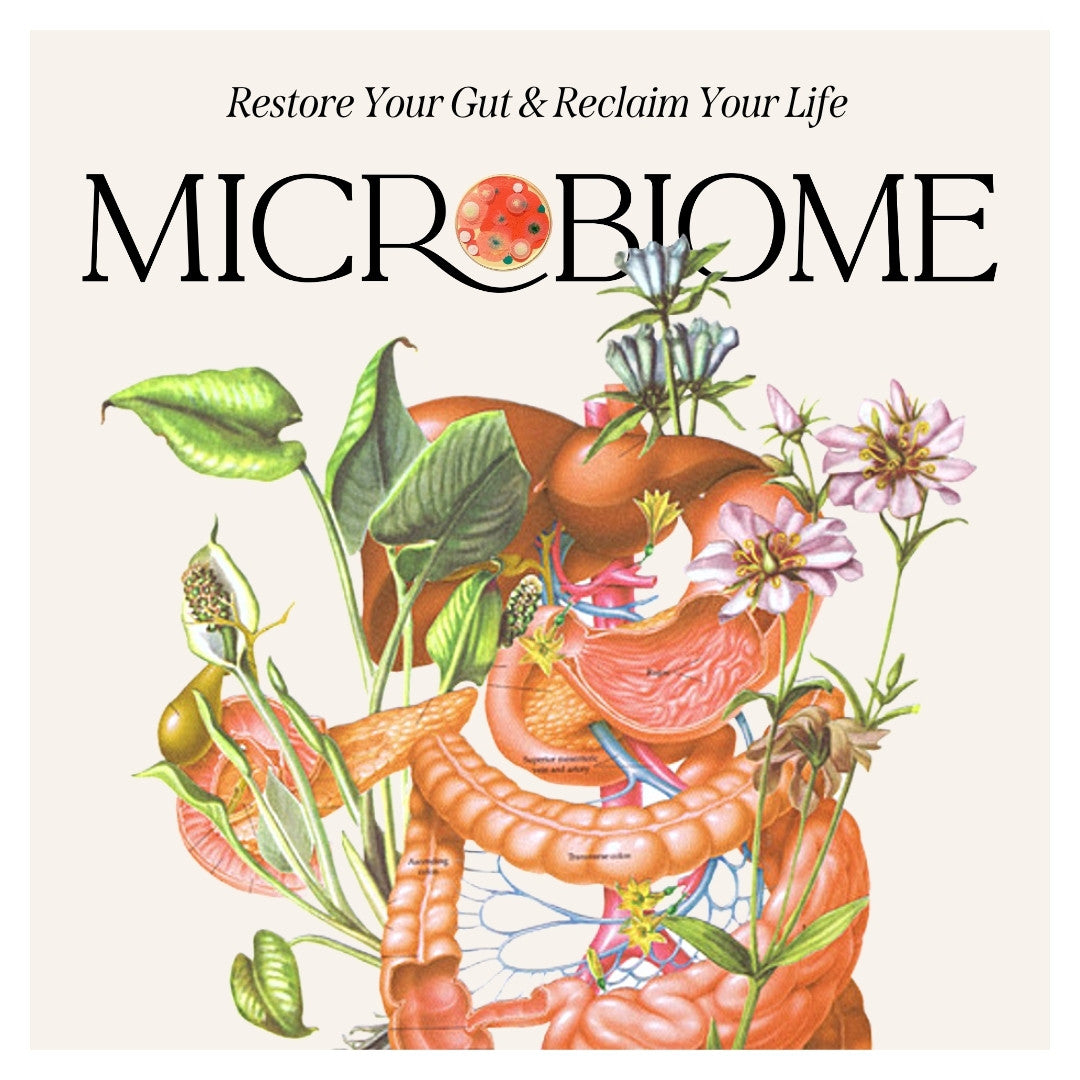

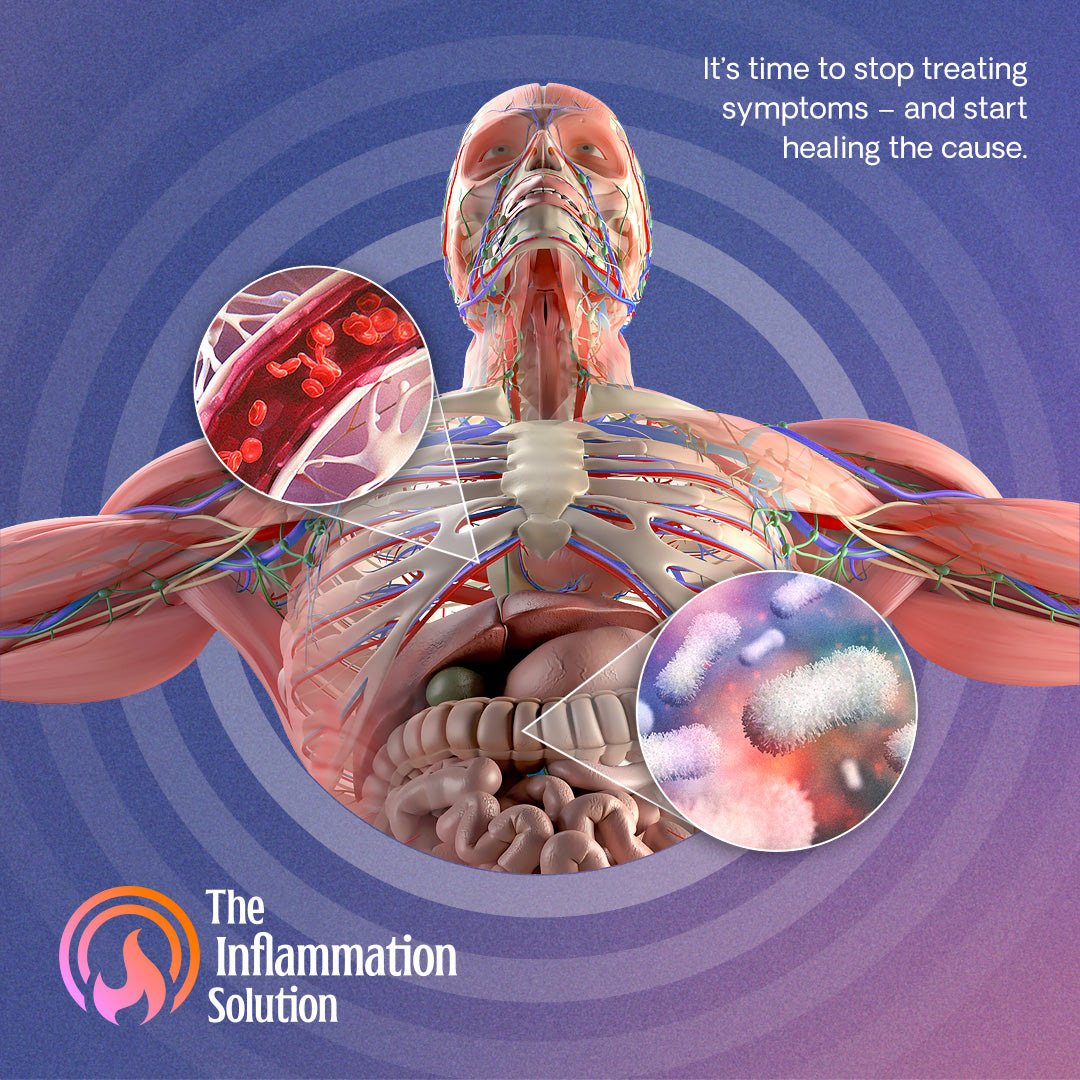

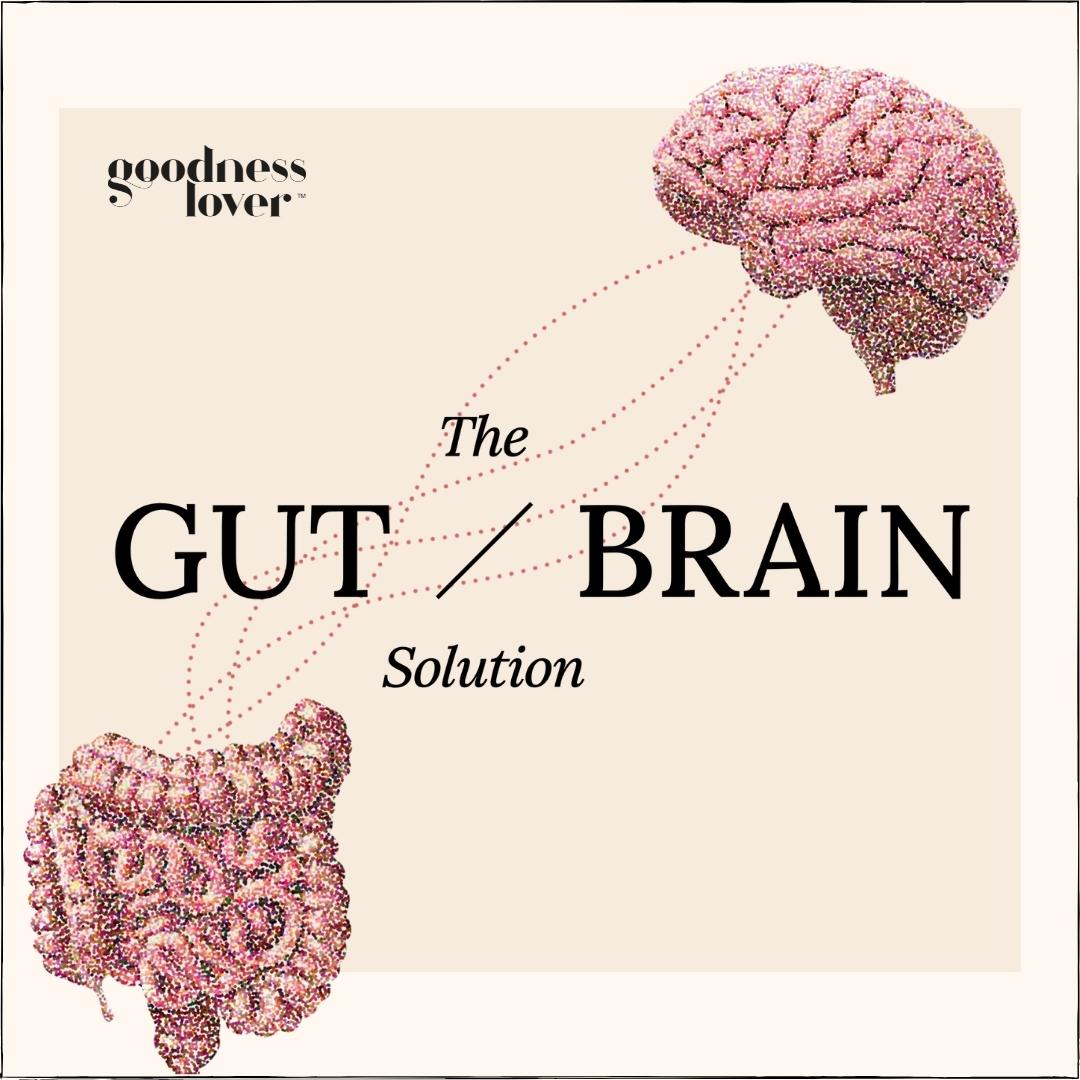

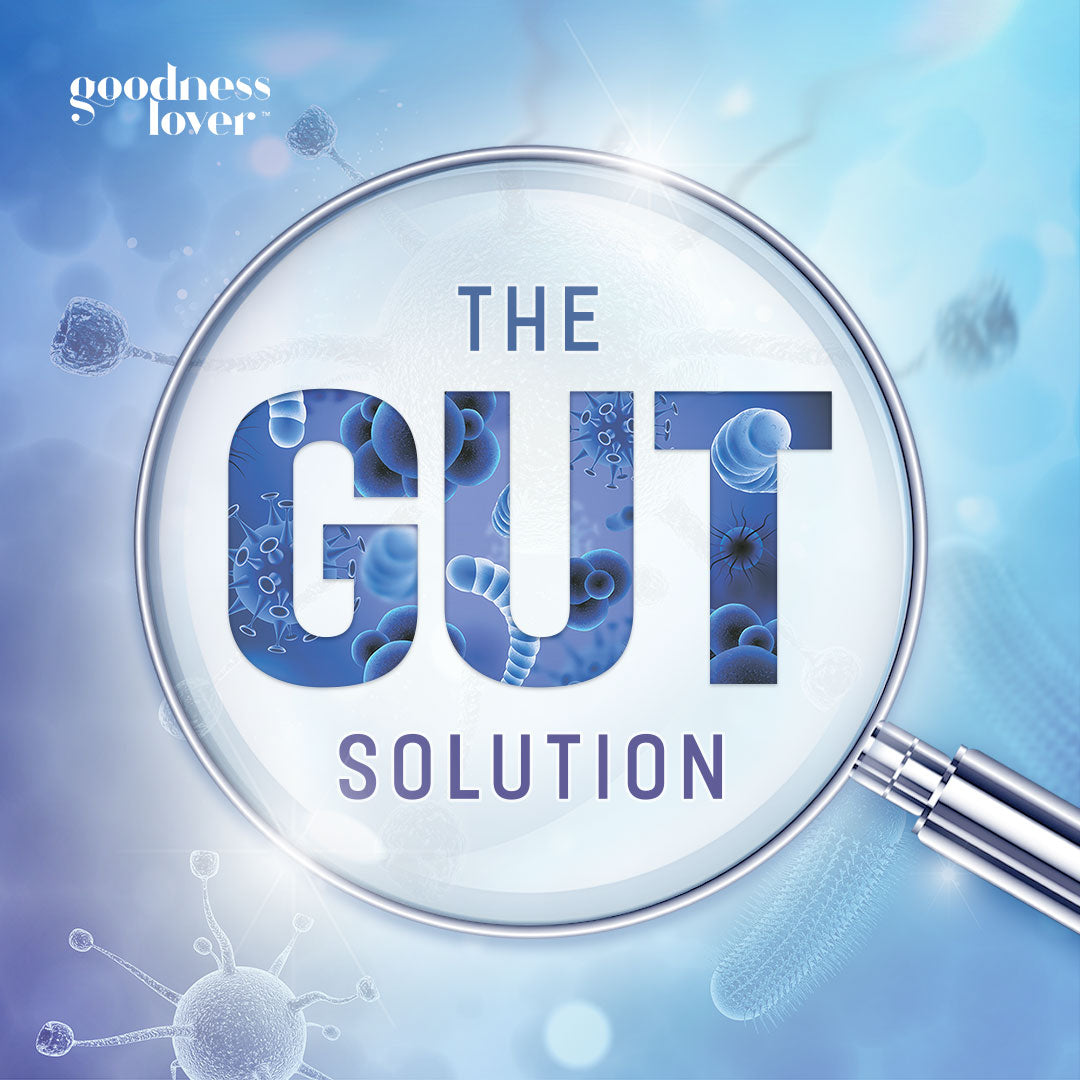
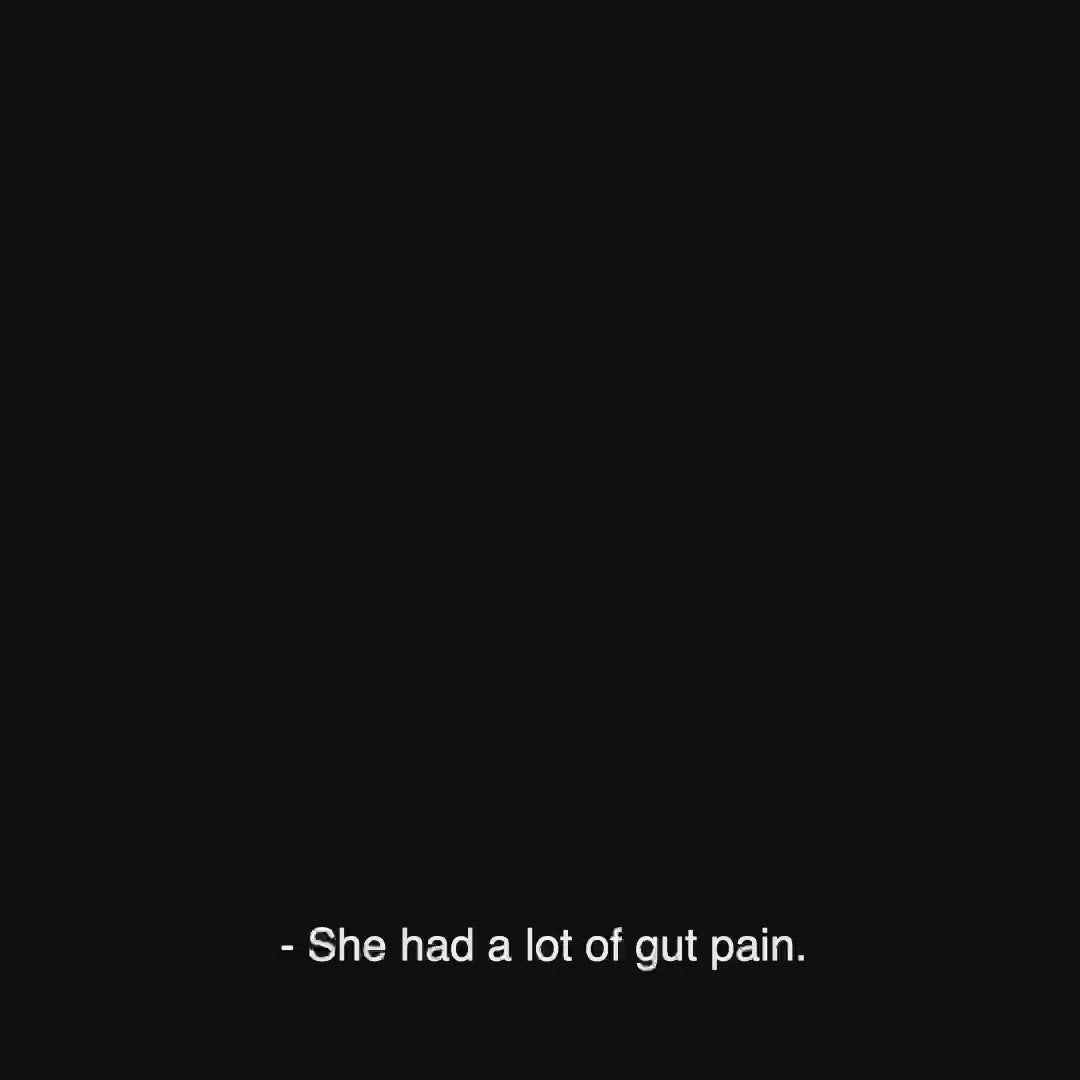

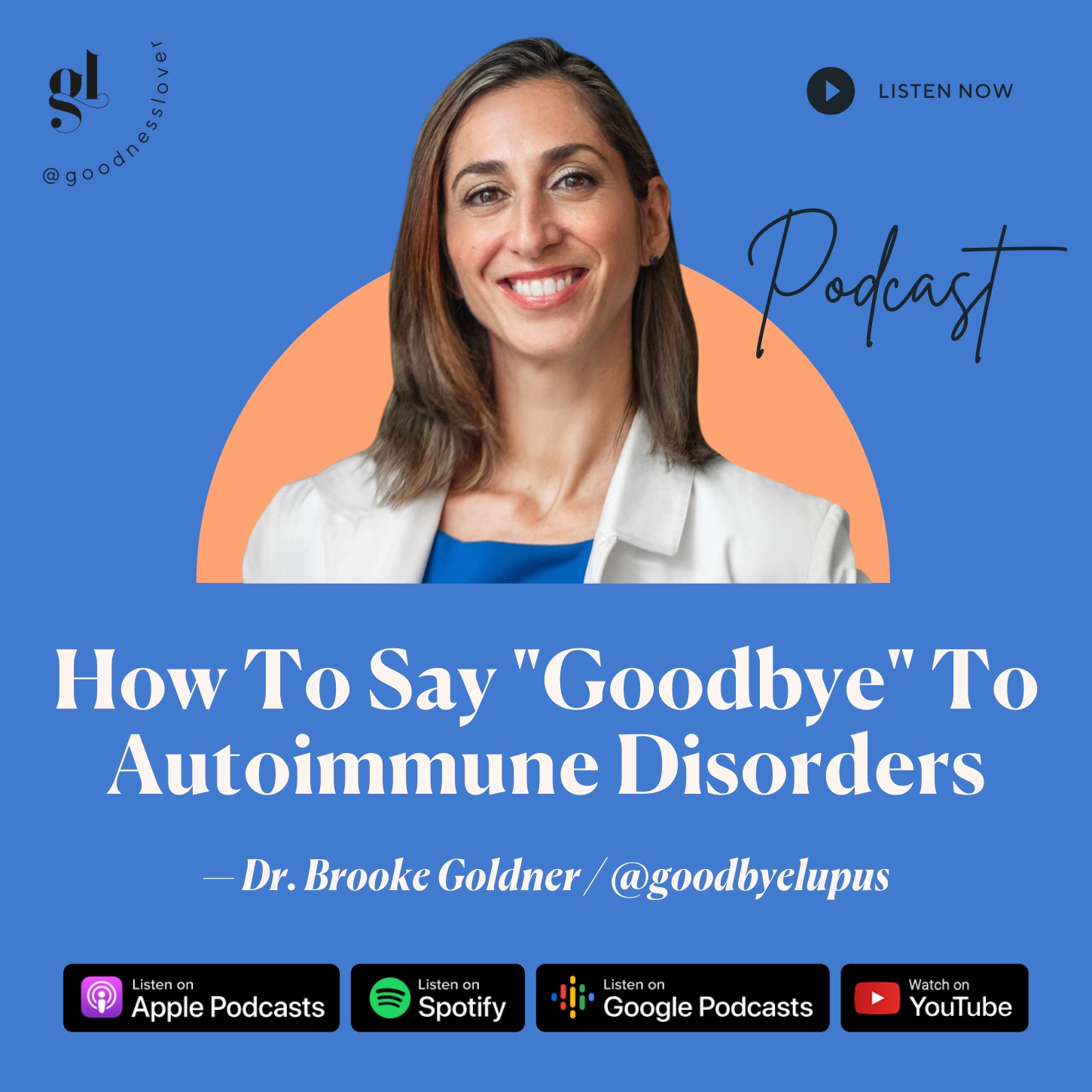

What Do You Think? Comment Below: